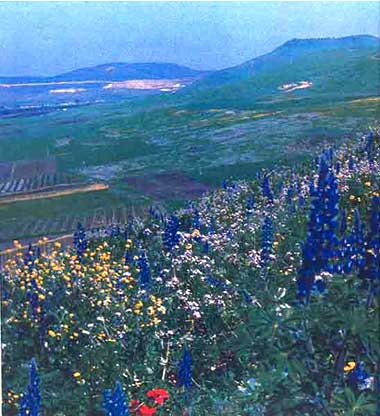Editor, H. S. (2002;2002). BAR 24:03 (May/June 1998). Biblical Archaeology Society.
Israel in Exile
Deserted Galilee testifies to Assyrian conquest of the Northern Kingdom
By Zvi Gal

Garo Nalbandian
Twin peaks frame the crater of the extinct volcano that marks Tel Qarnei Hittin, or the Horns of Hattin, overlooking the Sea of Galilee. Archaeologist Zvi Gal recently conducted a small excavation at Tel Qarnei Hittin as part of an archaeological survey of Lower Galilee. On the southern summit, he found a small walled city destroyed by fire in the late 13th century B.C.E., perhaps by Israelite settlers. From the tenth to the eighth centuries B.C.E., a large fortified city, probably an Israelite one, encompassed both peaks. From the eighth century B.C.E. on, the city–like the other Lower Galilee sites explored by Gal–was deserted. The archaeological evidence, or lack of evidence, indicates a break in occupation and supports the Biblical claim that following the invasion of the Assyrian king Tiglath-pileser III, many Israelites were exiled to Assyria.
Between 734 and 732 B.C.E., the Assyrian monarch Tiglath-pileser III campaigned to the west, from the Assyrian capital at Nineveh, cutting a swath into the northern kingdom of Israel as well as the southern kingdom of Judah. We know this from the Bible and from Assyrian records.
These texts tell us that Galilee, in northern Israel, was especially hard hit. Its people were exiled to Assyria–an exile, as it were, from which they never returned.
But how reliable are these records of deportation and exile? For this, we must turn to archaeology. From 1974 to 1984, I conducted an archaeological survey and a number of excavations in Galilee that not only answer this question, but open up a new chapter of research on the region.
next page >
page 1:7
 
|
Biblical Archaeology Review
This article is part of the Biblical Archaeology Review Archive CD-ROM. Click here to learn more.
|
|